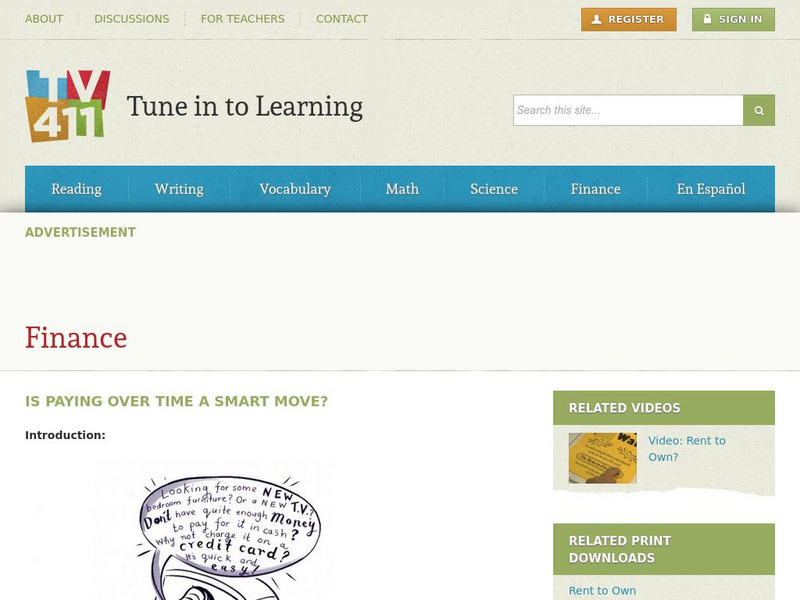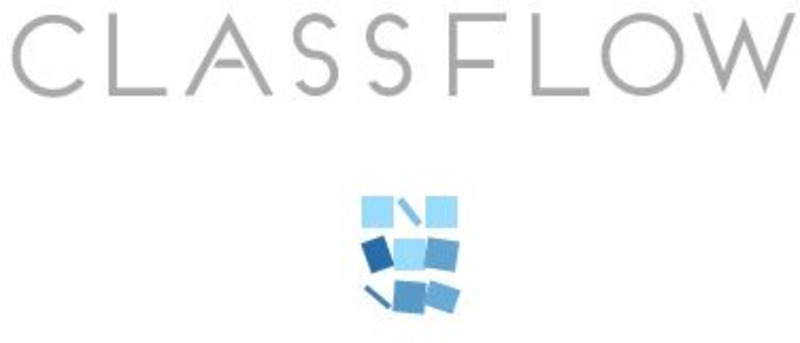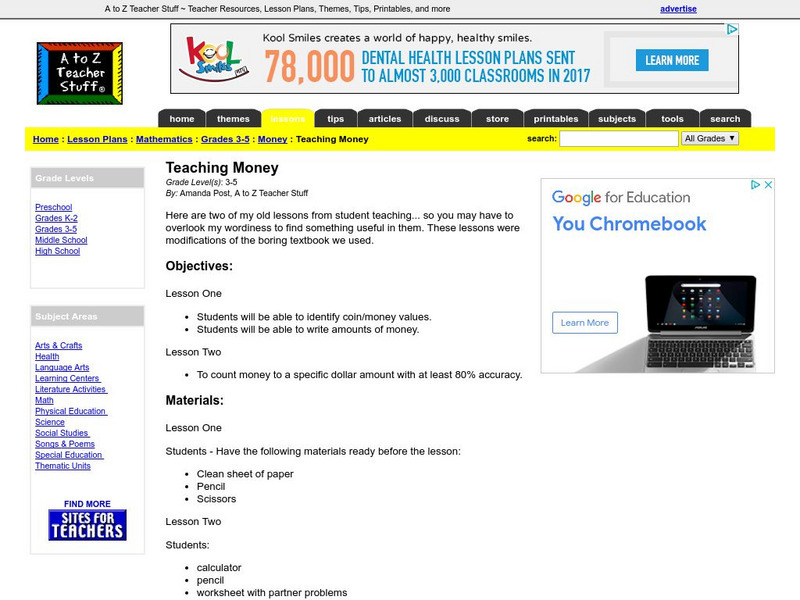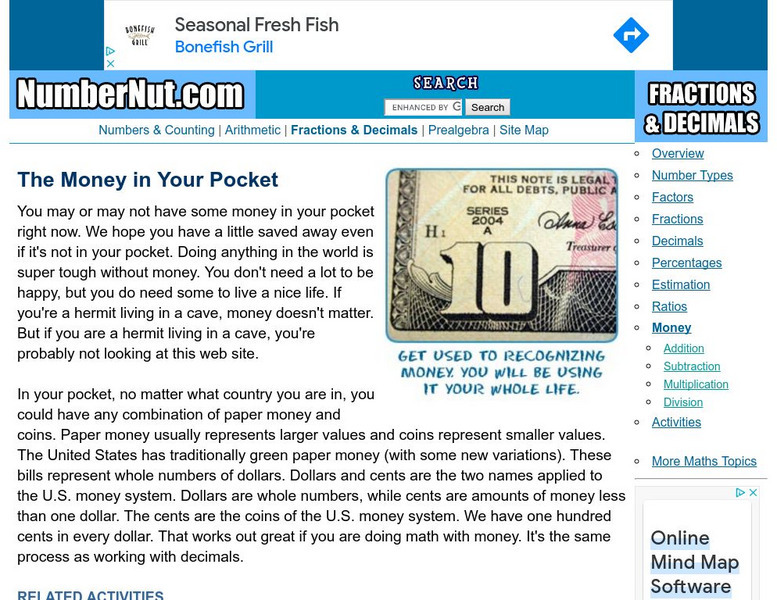Hi, what do you want to do?
Scholastic
Scholastic: Adventures in Math: Lesson 1: Money Basics
Why do we use money? Learn why we need money and to identify bills and coins.
University of Houston
University of Houston: Mathematics Lessons: Counting on Coins
This lesson plan for coin identification is aimed at Kindergarten and First Grade. Lots of activities, suggestions and other resources are also available.
James Madison University
James Madison University: Online High School Economics Lessons
James Madison University has developed a variety of online economic lessons for high school students. Explore basic economic and financial concepts.
CK-12 Foundation
Ck 12: Arithmetic: Combinations of Decimal Money Amounts
[Free Registration/Login may be required to access all resource tools.] Write amounts of money as decimals.
AAA Math
Aaa Math: Aaa Math Lessons
AAA Math's interactive tutorials and lessons assist students grades K-8 improve their understanding of a wide range of arithmetic topics. Students are provided with immediate feedback as they complete the "Learn," "Practice," and "Play"...
Utah Education Network
Uen: Let's Find Out About Money
For this multisensory lesson, students will learn the characteristics of each coin (penny, nickel, dime and quarter) and the value for each type of coin. Students will learn record observational data, learn a song, recite a poem, and...
University of Nebraska Omaha
University of Omaha: Why We Save [Pdf]
Why do people need to save money? This lesson plan is geared for Kindergarten through 2nd grade and helps pupils understand the reasons for saving.
NumberNut
Number Nut: Is There Enough? Values Under Thirty Cents
Count the coins and decide whether you have enough money to buy the object. Money value is less than thirty cents. There are ten random questions.
Council for Economic Education
Econ Ed Link: Hawaiian Economics: Barter for Fish & Poi
Use this lesson to learn more about the Hawaiian economics system. Learn how they developed and used this specialized type of money system. "In this lesson, you will learn how specialization and division of labor increased productivity...
Education Development Center
Tune in to Learning: Is Paying Over Time a Smart Move?
At T.V. 411 you can explore the concept of paying over time with situations involving credit cards, rent to own items, and more. This interactive lesson gives the learner an opportunity to make decisions about money management.
Better Lesson
Better Lesson: Hundreds, Tens, Ones Are Coins Too
Second graders will extend their understanding of hundreds, tens and ones using dollars, dimes and pennies as another way to express groups of 100, 10 and 1.
Scholastic
Scholastic: Adventures in Math: Lesson 1: Saving Money for Your Future
Tips for learning the value of saving money to achieve your financial goals.
ClassFlow
Class Flow: How Much Money Do You Have
[Free Registration/Login Required] In this flipchart every page has a different total value of currency. Students can practice counting money. This flipchart can be used to add to your currency lesson or used as a center.
PBS
Pbs: The Fall of the Dollar (Lesson Plan)
A lesson that helps student understand how exchange rates are determined and how the value of a nation's currency is connected to its international trade. Pupils use an article from a time when the U.S. dollar was declining in relation...
A to Z Teacher Stuff
A to Z Teacher Stuff: Teaching Money
This lesson plan site from A to Z Teacher Stuff focuses on learners identifying coin, money values, writing amounts of money, and counting money to a specific dollar amount with at least 80% accuracy.
ClassFlow
Class Flow: Count How Much Money You Have
[Free Registration/Login Required] This flipchart makes a great center or an addition to your money lesson. Students work in pairs or groups. One student drags an amount of money out for their partner and the partner counts the total.
Better Lesson
Better Lesson: Moving Into Thousands
To make sense of numbers in the thousands, 2nd grade students need practice identifying place value positions and using place value strategies in numbers to 1,000.
Better Lesson
Better Lesson: Missing Number Equations
Second graders will become more comfortable making sense of equations presented in missing answer (traditional) and missing number ( nontraditional) formats.
Better Lesson
Better Lesson: Making Change Using Partners of One Hundred
Using dimes to make change is another way to work with subtracting tens within 100.
Better Lesson
Better Lesson: Subtracting With Partners of 100
When subtracting ten from a 2 digit number, 2nd graders should be able to compute the answer as fluently and comfortably as do when they add ten to a 2 digit number.
NumberNut
Number Nut: The Money in Your Pocket
What do you know about the money in your pocket? Get a basic understanding of the United States monetary system and how it works in this lesson. Access links to four interactive games to practice your money and number sense skills. All...
CK-12 Foundation
Ck 12: Math Grade 4
Browse resources related to fourth-grade math standards. Click on a topic for interactive lessons, videos, and extra practice.
Council for Economic Education
Econ Ed Link: Lewis and Clark Barter With Native Americans
In this lesson you will define the term barter and give examples of bartering in several different areas. Find out how this system took shape and was useful to Lewis and Clark. This site is extremely informative and contains extension...
PBS
Pbs: The Lowdown: Defining and Calculating Percents
Explore methods for calculating and comparing discounts in this video from KQED. In the accompanying classroom activity, students develop different strategies for calculating and comparing discounts, including percent off a price,...







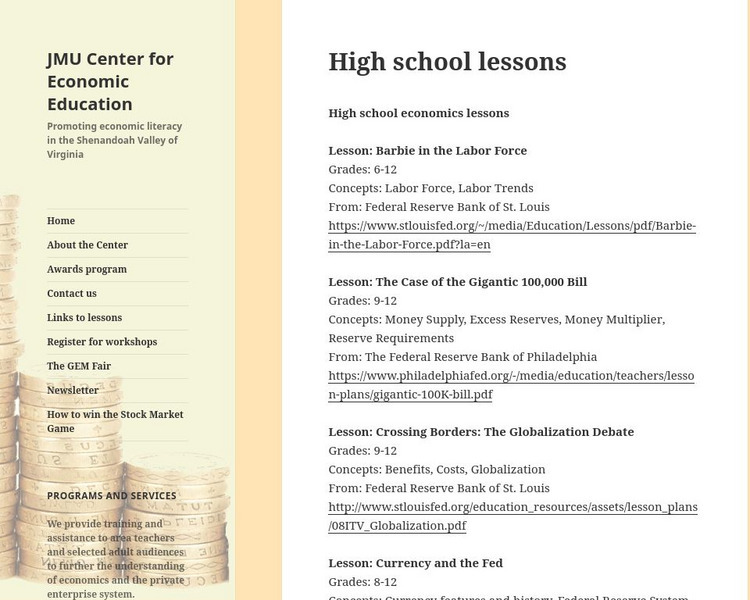
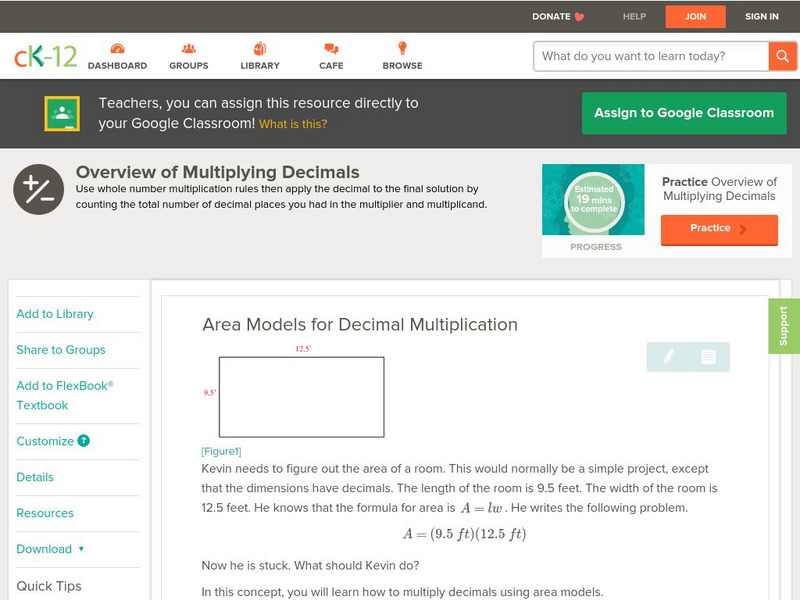


![University of Omaha: Why We Save [Pdf] Lesson Plan University of Omaha: Why We Save [Pdf] Lesson Plan](https://static.lp.lexp.cloud/images/attachment_defaults/resource/large/FPO-knovation.png)


